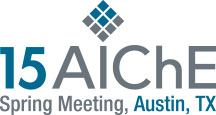

There have been numerous guidebooks written for the application of Hazard and Operability (HAZOP) Studies to mature designs, e.g., operating facilities and capital projects where the design is complete. For these systems, key process safety information is typically available, but for fast-moving capital projects that is oftennot the case, and in addition there are often many contrasting issues:
- Design flexibility allows for more extensive changes at early stages of the project. Even the ability to cost-effectively make larger numbers of smaller changes can have a measureable improvement in safety and decreased operational risk.
- Less-detailed design information at early stages of the project can result in an incomplete safetyassessment.
- Design changes can have a more significant negative impact on project schedule later in the project cycle.
- Designers can benefit from feedback obtained from Plant Operations Personnel and from the thought process invoked by the HAZOP approach.
These issues represent fundamental contrasting priorities. Although applying a designed-to-be-detailed analysis tool like a HAZOP Study at early stages of the project is a fundamental challenge and presents many dilemmas to the HAZOP Study Facilitator, the application of a phased approach can help achieve the true objectives of the HAZOP Study, which is to make as many safety improvements as practical to minimize risk.
The "double-edge sword" is by incorporating HAZOP Study approaches early in the design process, important safety improvements can be done more cost-effectively, allowing limited project funds to have a greater impact in lowering net risk, but it may require some "re-visiting" of the HAZOP Study. The alternative (doing a final HAZOP Study, after all of the design work is complete) obviates the need for any re-assessment of safety issues, but it also eliminates the practical ability to implement any design changes, unless the risk is very high. Thus, if carefully managed, the introduction of HAZOP concepts early in the design cycle, evolving the level-of-detail with design maturity, and the performance of focused updates to the HAZOP Study, can be used to most cost-effectively minimize the risk associated with the project design. This approach can also be used to minimize last-minute design changes that could have had the potential to greatly increase project costs and result in project delays.
Our objective is to allow the audience to walk away from this with new concepts, practical examples, and charts and graphs that they can share with capital project management to allow a shift in paradigm that uses a HAZOP Study in a new way that provides for safer process facilities, while likely streamlining project schedules and budgets. In this way, the HAZOP is not perceived as a project impediment, but is seen as support of key capital project goals and objectives.
This paper will build on the insights presented at the Eighth GCPS, with some additional lessons-learned and application tips addressing the latest design challenges and increased application of Layer of Protection Analysis. Another key focus for this paper will be tips on absorbing key safety insights from the system designers and structuring the D-HAZOP for use by the Owner/Operator throughout the life of the facility.
